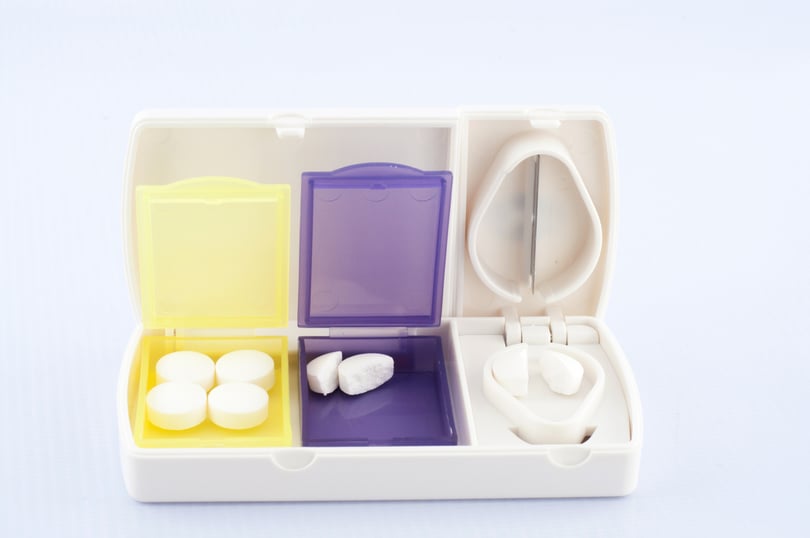Is it Okay to Split Medication in Half?
Whether you are looking to take a smaller dose or are unable to swallow an entire pill whole, breaking or cutting pills or tablets in half is a common practice. Whichever the reason may be, it is important to know which types of medications can be split in half and which medications can become less effective or cause unwanted side effects if split.
Each medication is different, and while some may look the same, certain medications have distinct coatings, bulking agents, or other characteristics that allow for them to be effective. These characteristics also determine if they can be cut or split in half.
Here are the types of medications that should NOT be split in half:
Extended release or controlled release medications
Medications such as Tylenol, Lyrica, and Tramadol are extended release medications, meaning they are formulated to be slowly released into the blood stream. When these types of medications are split in half, the formula of the medication is altered, causing the medication to not be properly released and potentially causing unwanted side effects.
Enteric or protective coated medications
Common medications that are enteric or protectively coated are Asprin, Advil, Bisacodyl, and Diclofenac. The coating in these medications provides a protective barrier for the stomach lining. If a medication of this classification gets cut in half or broken, the coating which protects the stomach lining is also broken, causing the medication to irritate the stomach.
Medications formulated for oral use such a lozenge
If medications such as Zofran, Clonazepam, or vitamin b12 supplements are split, they will not be absorbed correctly under the tongue, causing the individual taking the medication to not receive the appropriate dose.
Common pain management medications that are formulated with a specific technology to discourage misuse and abuse
- Embeda – If this medication is cut or split in half, it will release naltrexone
- OxyContin – This medication is resistant to cutting, crushing and breaking
- Xytampza/Hysingla: This medication is resistant to crushing and breaking
While splitting or cutting tablets in half is not recommended, if you do wish to break a tablet in half here are some important things to consider:
Use a certified tablet splitter
Unlike knives or scissors, tablet splitters ensure an even cut every time you cut or split a medication. Even cuts are important as they allow for you to continue to take the appropriate dosage of medication once it is split in half.
Use split tablets as quickly as possible
Once a tablet is split, it loses its integrity and can crumble and deteriorate quicker than usual. Therefore, it’s important to use these split tablets before using a whole tablet. In order to ensure that the tablet retains its efficiency, don’t let the split tablets stay at the bottom of our bottle - take them first.
Always consult your pharmacists first
There is always an exception to the general rules mentioned above, but your pharmacists can provide you with the knowledge around your specific medication and your dosage. Work with your pharmacist to determine how to take the proper dosage for your medication.
Always be sure to consult with your care team prior to making any changes to your medication. Splitting tablets can be an option for specific patients when necessary, but generally not recommended due to a lack of consistency and potency.
Other Posts You Might Be Interested In
Subscribe to email updates
Stay up-to-date on what's happening at this blog and get additional content about the benefits of subscribing.



